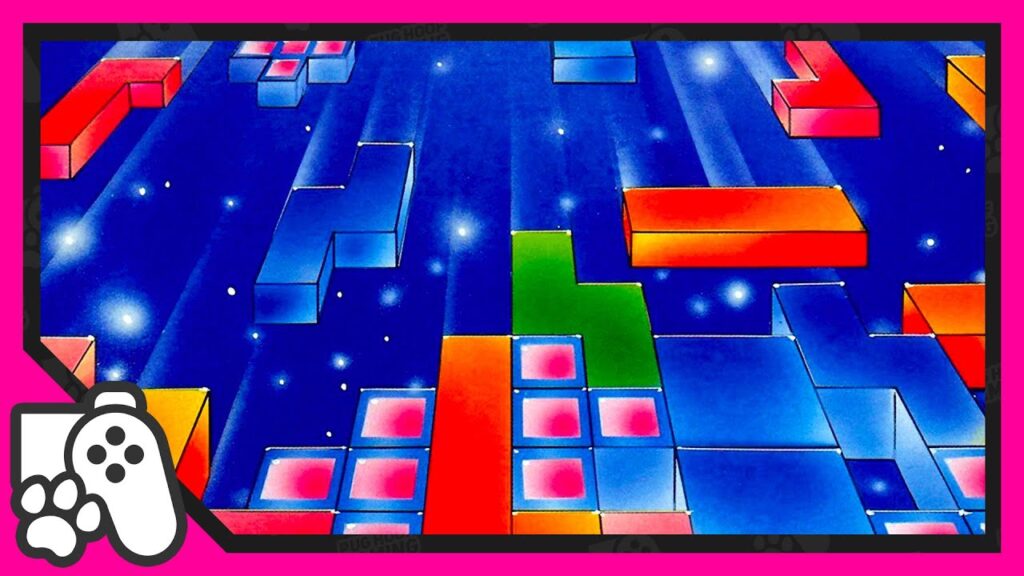It’s arguably one of the cultural touchstones for the entire medium of video games. It’s a series that’s spawned countless ports, revisions, and mashups, with no sign of stopping and while this particular instalment is far off from being its first release, it’s certainly the edition we all know and love.
On the list of Games To Play Before You Die, Tetris simply has to at the top of the list.
Created by Alexey Pajitnov and originally released in 1986, Tetris has an origin story that’s possibly as compelling as the game itself – It’s a tale that’s filled with more than a few legal wrangles, and it’s a story that’s been told in various documentaries, so I shan’t delve into it here in any detail, other than to say that in short, while Pajitnov initially gave the licensing rights to the Russian government for a period of a decade, those rights were then distributed through various licensees and sub-licensees and in a chaotic turn of events, several companies staked a claim to various computer, console and arcade versions, causing a whole heap of legal battles. Ultimately, Nintendo were lucky enough to claim the console rights to this simple puzzle game, and in a truly inspired decision, packed it in with the Western versions of their new handheld system, the Game Boy.
At its core, Tetris is a game of very simple rules. From the top of a narrow vertical play area come falling shapes, officially known as Tetriminos, taken from the Greek word Tetra, meaning ‘four’. These Tetriminos coming in seven different configurations. No more, no less. You all know how the game works, and despite the occasional mechanical tweak, such as the behaviour of rotating shapes or the ability to store a piece for later, over three decades later, the core mechanics have remained relatively unchanged.
This tells you a lot about how good Tetris is as a concept. How many games can you say have remained mostly unchanged in this fashion – Yet still remain as playable today as it did all those years ago. And what’s more, it’s a game enjoyed by almost anyone – Even those that wouldn’t consider themselves as gamers. I liken Tetris to the gaming equivalent of a warm hug. It’s always been there, an inevitability of the medium is that it’s always possible to obtain a new form of Tetris from somewhere, and I find a sense of comfort in that.
I cannot express how shrewd it was of Nintendo to sign this game up as an early Game Boy release because, despite its origins as a PC game, a handheld is where Tetris truly feels most at home. It works as a game played in short bursts but can also be enjoyed in longer sessions. Much longer sessions, as many people find after being hopelessly addicted, with the “one more go” factor being incredibly strong.
In packing Tetris with the Game Boy, Nintendo basically gave themselves a license to print money, and it helps that this game is so superbly made for the system. The simple visuals work so well, even on a tiny LCD screen, and the Game Boy’s linkup for two-player head to head action is a fantastic addition.
And let’s just talk about that theme tune, which has become as iconic as Tetris itself. While featuring three selectable background tracks to be played during gameplay, it is the default Type A piece, an arrangement based on the Russian folk song Korobeiniki, that will forever be linked to Tetris’ legacy. It’s one of gaming’s most recognisable pieces of music and honestly, how many other video games can boast having an official music single, one that reached the lofty heights of number 6 in the UK music charts in 1992? While this track had previously featured in other ports of Tetris, it’s the Game Boy instrumentation, as arranged by Hirokazu “Hip” Tanaka, that the world identifies with.
Many have tried to improve upon Tetris, with Nintendo themselves releasing a sequel that didn’t quite have the staying power of the original, with a Dr. Mario inspired mechanic of matching coloured blocks to remove coloured blobs. Even Alexey Pajitnov has struggled to create a puzzle game that matches Tetris in terms of appeal, and no – Hatris doesn’t even come close.
Need further proof of Tetris’ place in culture? Let’s talk about the Tetris Effect. No, not the excellent PlayStation 4 version of the game, but a recognised phenomenon relating to when extended participation in a particular activity can lead to elements of said activity entering a person’s thoughts, dreams and other mental imagery. In some alleged cases, Tetris players have reported hallucinations of falling tetromino.
Some studies have even gone some way into proving that playing Tetris can have a beneficial effect on the brain, thickening grey matter and improving physical cognitive development. So, even though Tetris is a game to play before you die, I’d say it would certainly do you some good to play it well before you shuffle from this mortal coil.
What do you think? Should Tetris be a game that everyone should play by law, and is the Game Boy version the definitive version? Sound off your opinions in the comments below, and I’ll see you soon for more gaming greatness.
Want more Game Boy-related stuff? Check out this detailed look at the Game Boy Light, possibly the best version of the handheld ever created!

